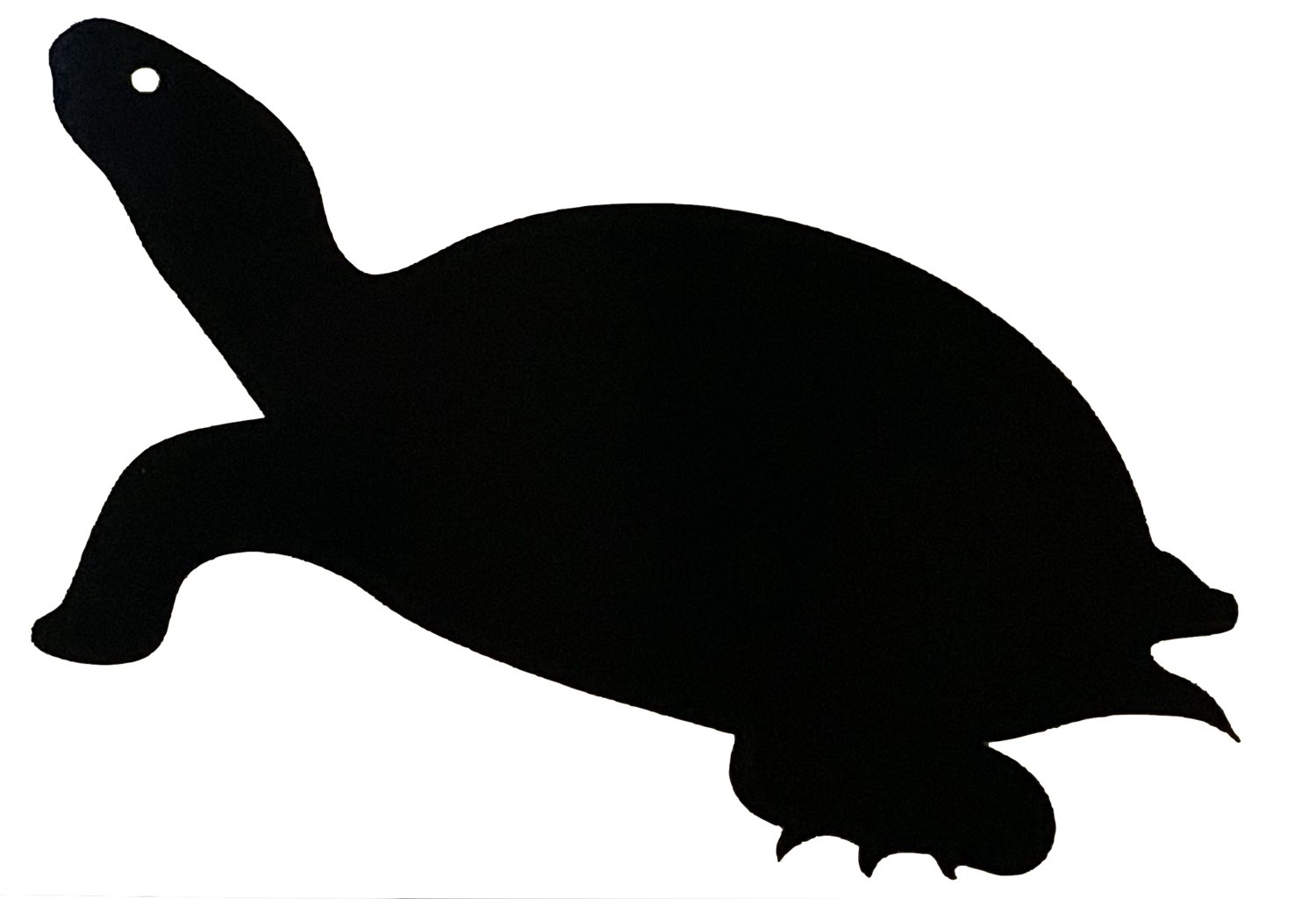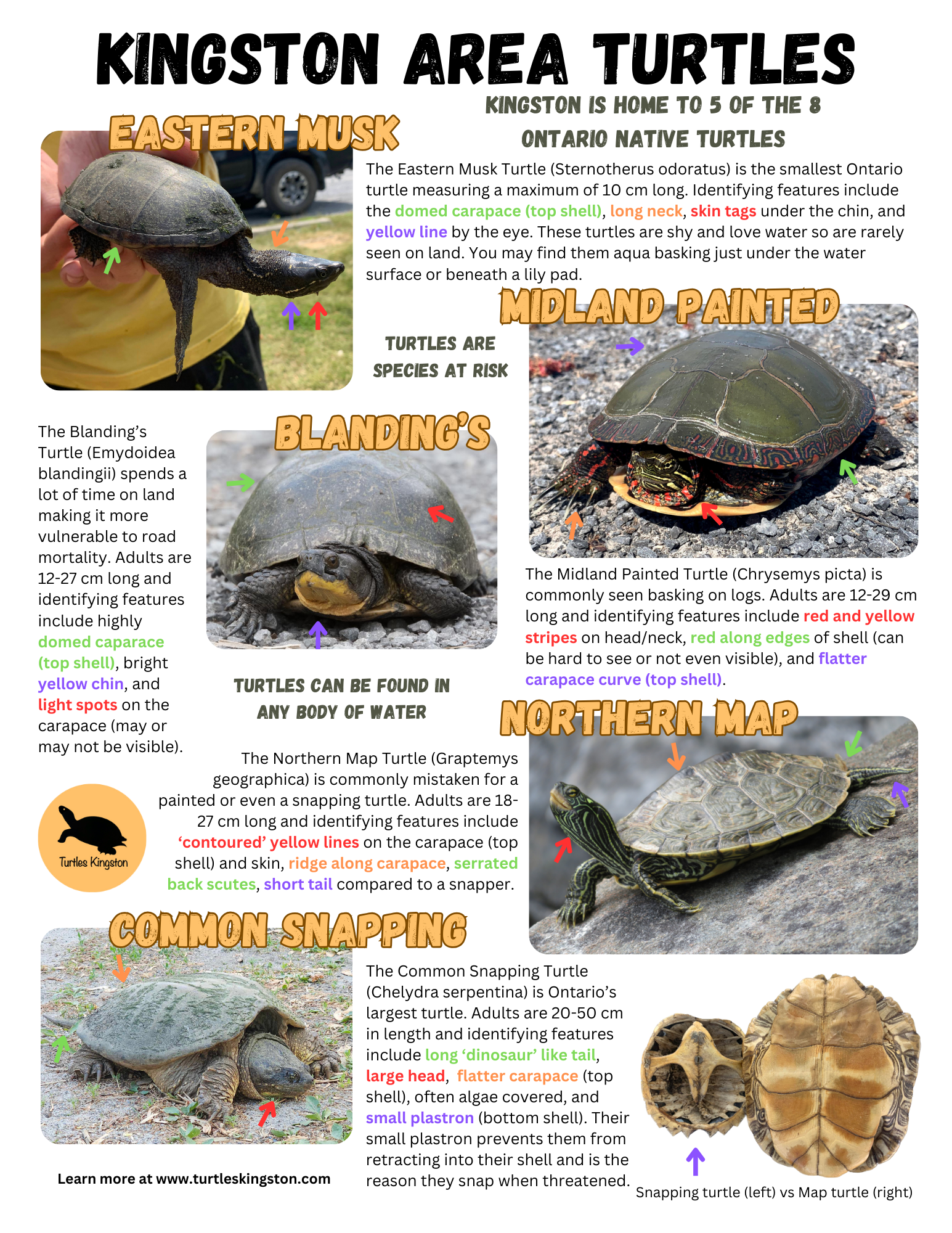Midland Painted Turtles
How to identify midland painted turtles
This is one of the most common turtles you may find in Kingston. Midland painted turtles can be identified by the red and yellow stripes on their heads. Their plastron (bottom shell) will have a grey/black splotch in the centre (but may be absent in older turtles). The carapace (top shell) has red blotches along the edges. They are generally 11-14 cm in length as an adult.
Midland painted turtles may be confused with red-eared sliders. Red-eared sliders are not native to Ontario but are found as a result of pets being released into the wild. Red-eared sliders will have a large red blotch behind each eye and their plastron will have multiple dark circles and blotches. These turtles are also generally larger ranging from 12-29 cm in length.
A painted turtle nesting in some grass
This painted turtle was rehabilitated at Sandy Pines Wildlife Centre after being hit by a car - you can see some damage on the carapace (to shell) that has healed
A painted turtle with a healed neck injury
A painted turtle with a healed carapace (shell) fracture
Male painted turtles can be identified by their long toenails
The plastron (bottom shell) of a painted turtle is yellow with a central black blotch
Painted turtles are one of the most common turtles to find basking in Ontario
Male painted turtles can be identified by their long nails
Painted turtle hatchlings start off the size of a quarter
About Painted Turtles
Painted turtles are commonly found basking on logs in water bodies. They live in the water and will come onto land to nest and migrate.
Although you may have seen many painted turtles, they are still considered a species of Special Concern because of high road mortality rates that drastically impact their population numbers.
Clutch and Incubation Facts: 3-15 eggs that will hatch in 60-90 days, although hatchlings often overwinter in the nest (remain in the nest until spring).














